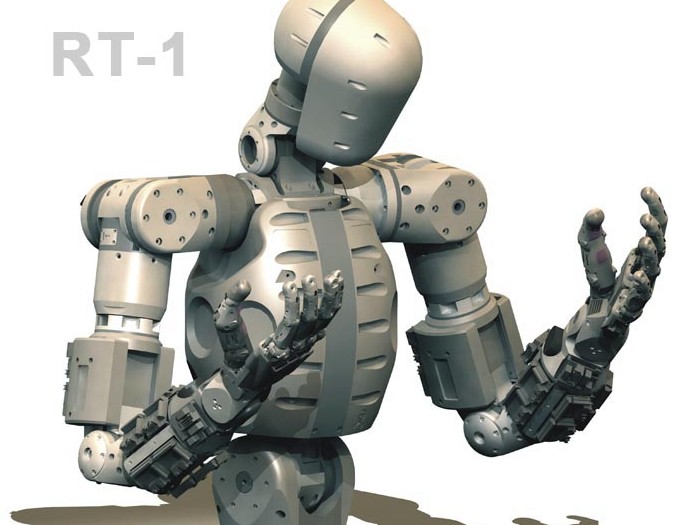Interview: BERTI robot designer

Ever fancied taking on a robot at rock-paper-scissors? If so, then head down to London's Science Museum this week for a startling demonstration of the future or robotics and artificial intelligence.
Life-size humanoid robot BERTI – or, to give him his full name, Bristol EluMotion Robotic Torso number 1 – has been entertaining parents and kids alike at London's Science Museum this week.
'Gesture-bot' Berti can accurately mimic human gestures and hand movements, featuring nine degrees of movements in his human-like hands, fingers and thumbs.
The robot is the latest result of a joint project between Bristol Robotics Laboratory (BRL) and robotics specialists at Elumotion Ltd.
TechRadar spoke with Dr Graham Whiteley, co-Director of Elumotion, who told us a little more about Berti's background, as well as outlining some of the future plans for the tech.
"We were originally approached in 2005 approached to built a robotic platform with human gesturing," Whiteley informed us. "We looked at anatomy and biomechanics and designed some new joints for the wrist, elbow and shoulder.
"We also designed a new hand with nine degrees of freedom – so you have full trigger fingering [effectively the equivalent of two knuckles] in digits two and three, full flexibility of the thumb, spreading of the fingers and so on."
Sign up for breaking news, reviews, opinion, top tech deals, and more.
Robots educate and entertain
Children and adults have been kept very entertained at the Science Museum this week, playing 'rock paper scissors' with Berti, which Whiteley admits has been "very satisfying indeed for a design engineer to see."
So what of future educational, commercial and other applications of robots such as Berti?
"Well, initially, we'd love to see Berti used in a number of entertainment and educational applications. I would love to see a permanent exhibition at the Science Museum, with him explaining science to children, with a scientists face projected onto the robot's face, for example."
There are also those critical situations in which a humanoid robot such as Berti could be used via tele-operation, where the movements of an operator wearing a data suit are re-enacted by the robot, "so that person is comfortable whereas the robot may well be in a hazardous environment," Dr Whiteley explains.
There are also the multiple potential medical uses in Orthotics, where humans with deformed limbs "may benefit from the use of some of our exoskeletal joints" says Whiteley.
The rise of the robots
And what of the longer term vision? How might the robotic technologies being developed by Elumotion be used in ten or twenty years time?
"We're working towards the design of future humanoid robots that will be intuitive and natural for people to interact with and that have demonstrable usefulness in everyday life; so that people will accept them to help at home as well as in the workplace.
"Bristol Robotics Laboratory is looking at ways of recreating a more fluid, face-to-face experience with something that looked more like a person. Something that has the form of a person and can move and grip and so on… That's the more grand vision."
"I would love to see a tie-up with Google, for example, in which telepresence could interact with Google Earth," enthuses Dr Whiteley, "which would be a great way of breaking down communication barriers."
Head over to the London Science Museum's Robot Playground exhibtion this week to see if a robot can beat you at rock paper scissors!
